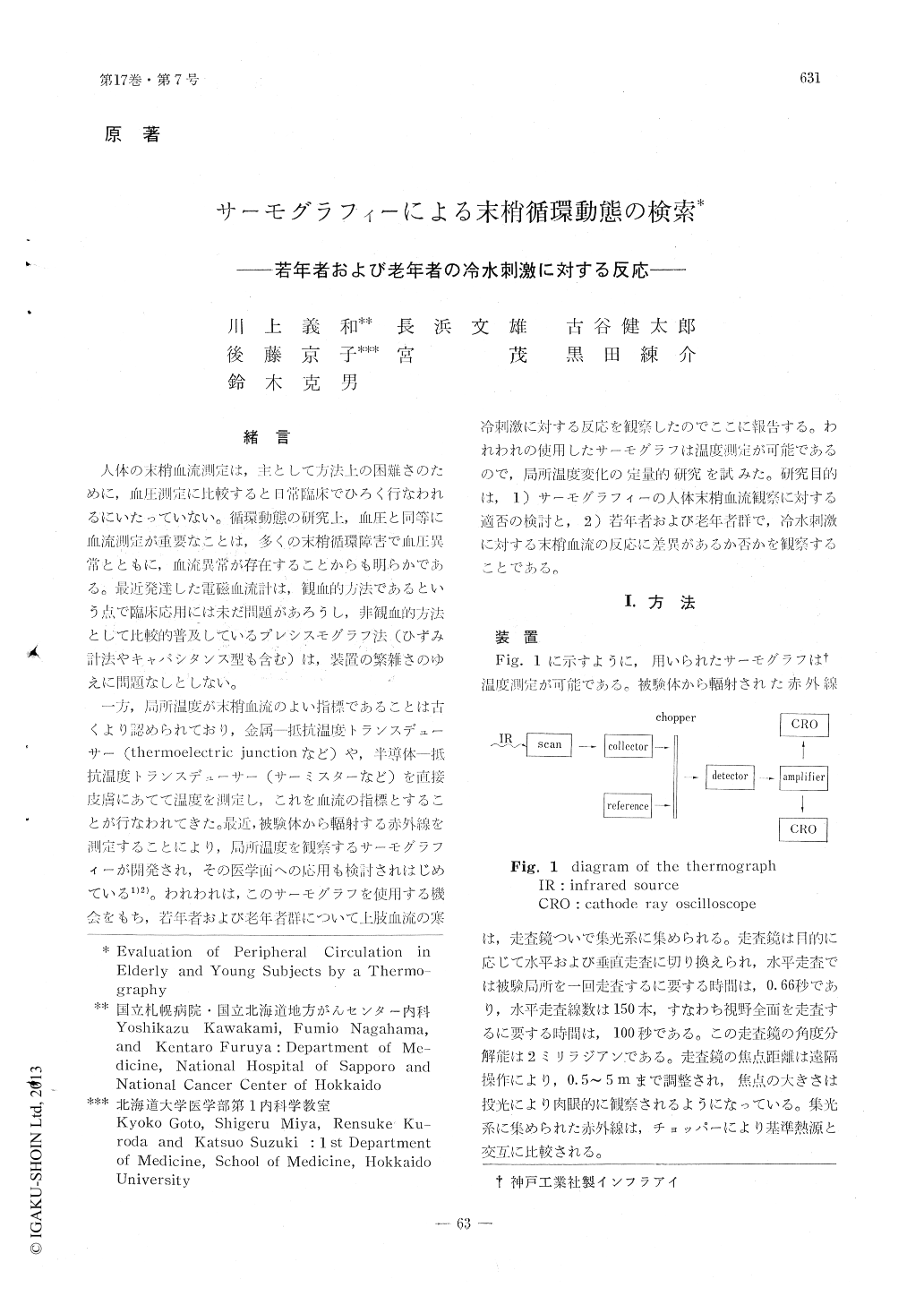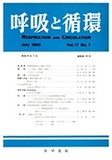Japanese
English
- 有料閲覧
- Abstract 文献概要
- 1ページ目 Look Inside
緒言
人体の末梢血流測定は,主として方法上の困雅さのために,血圧測定に比較すると日常臨床でひろく行なわれるにいたっていない。循環動態の研究上,血圧と同等に血流測定が重要なことは,多くの末梢循環障害で血圧異常とともに,血流異常が存在することからも明らかである。最近発達した電磁血流計は,観血的方法であるという点で臨床応用には未だ問題があろうし,非観血的方法として比較的普及しているプレシスモグラフ法(ひずみ計法やキャパシタンス型も含む)は,装置の繁雑さのゆえに問題なしとしない。
一方,局所温度が末梢血流のよい指標であることは古くより認められており,金属—抵抗温度トランスデューサー(thermoelectric junctionなど)や,半導体—抵抗温度トランスデューサー(サーミスターなど)を直接皮膚にあてて温度を測定し,これを血流の指標とすることが行なわれてきた。最近,被験体から輻射する赤外線を測定することにより,局所温度を観察するサーモグラフィーが開発され,その医学面への応用も検討されはじめている1)2)。われわれは,このサーモグラフを使用する機会をもち,若年者および老年者群について上肢血流の寒冷刺激に対する反応を観察したのでここに報告する。われわれの使用したサーモグラフは温度測定が可能であるので,局所温度変化の定量的研究を試みた。研究目的は,1)サーモグラフィーの人体末梢血流観察に対する適否の検討と,2)若年者および老年者群で,冷水刺激に対する末梢血流の反応に差異があるか否かを観察することである。
Measurements of local temperature of the finger tip and dorsums of hand and forearm were performed on 20 young and elderly subjects by a thermograph. The purposes of the experiments were 1) to examine the reliability of the thermograph for an evaluation of the peripheral blood flow in the human subjects and 2) to observe the thermal response of the upper extremities of the young and elderly subjects to the immersion of the contralateral hand in cold water.
During the immersion of the hand for 1 minute, heart rate of the elderly subjects invariably increased and then returned to the control values after the immersion. All but two young subjects had no increase in heart rate during the immersion.
The thermograph followed satisfactorilly well after a rapid change in local temperature due to physical, chemical and physiological stimuli on the peripheral blood flow and gave absolute values of the temperature change. Temperature of the dorsum of the forearm did not change during and after the immersion in most of the subjects of both groups. Hand temperature in the elderly subjects showed some variable change during and after the immersion while that in the young subjects did not show a marked chan-ge. Temperature change in the finger tip ofthe elderly was especially characteristic in that, after the immersion, there were incr-eases in temperature over the control value in subjects whose finger temperature was initially high. Factors which govern this phenomenon were discussed.

Copyright © 1969, Igaku-Shoin Ltd. All rights reserved.


